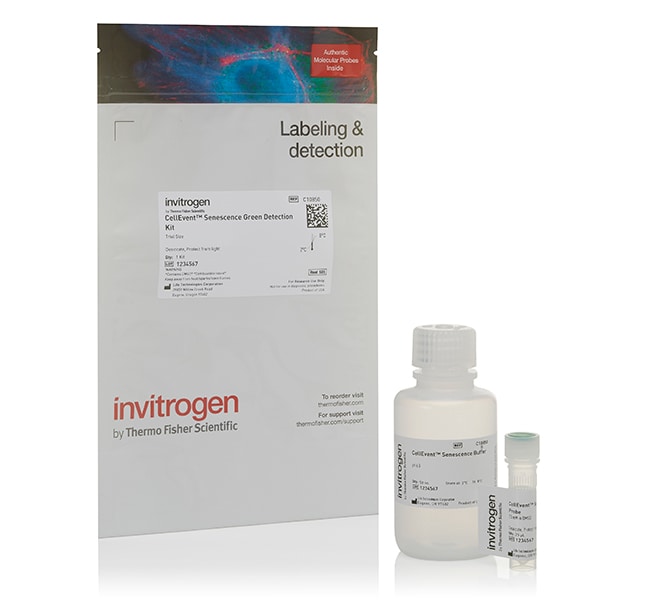Search Thermo Fisher Scientific
- Contact Us
- Quick Order
-
Don't have an account ? Create Account
Search Thermo Fisher Scientific

| Catalog Number | Quantity |
|---|---|
| C10850 | 25 μL |
| C10851 | 100 μL |



The CellEvent Senescence Green Detection Kit can be used with various sample types, including fixed cells, adherent cells, and tissue sections.
Find additional tips, troubleshooting help, and resources within our Cell Analysis Support Center.
The CellEvent Senescence Green Detection Kit (C10850) requires fixation for the stain to enter lysosomes. The beta-galactosidase remains active immediately following fixation with paraformaldehyde, so there is a requirement to stain the cells shortly after fixation.
We have not tested fixation and long-term storage. The beta-galactosidase activity could decrease if you wait too long after fixation to stain. Therefore, we do not recommend using the CellEvent Senescence Green Detection Kit on already fixed samples.
Find additional tips, troubleshooting help, and resources within our Cell Analysis Support Center.
Yes. After incubating the cells with CellEvent Senescence Green Probe, permeabilize the cells, wash, and proceed with detection.
Find additional tips, troubleshooting help, and resources within our Cell Analysis Support Center.
We do not recommend using your own buffer with the CellEvent Senescence Green Probe. The assay is pH sensitive and we recommend that you use the buffer provided in the kit be used.
Find additional tips, troubleshooting help, and resources within our Cell Analysis Support Center.
No. It only works on fixed cells; b-galactosidase is still active immediately following fixation with paraformaldehyde.
Find additional tips, troubleshooting help, and resources within our Cell Analysis Support Center.
Share catalog number, name or link